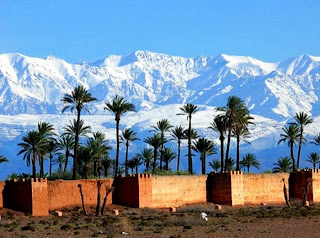Wanna holiday at the world’s entertainment capital?? Catch your next
flight to Dubai to romp out and fling around the gaietie and be a part
of its race to be the world’s entertainment capital with its. Dubai is
sandwiched with Delirious Unlimited Boisterous Amusements. If holidays
are meant to rejoice and chill out then Dubai is the right place to hang
out, so obsessed with entertainment. It’s an emirate in UAE, in fact
the second largest among the seven Arab emirates in the Asian continent.
So what makes it an entertainment destination? The world’s tallest sky
scraper Burj Khalifa, the last word of luxury and delicacy the world’s
only seven star hotel Burj Al Arab, the world islands, the Jumeirah palm
islands are all anchored to the sands of Dubai. The Dubai Autodrome and
the Wild Wadi theme park are centres of extreme devilment and fun. The
Ferrari world in Dubai gives you the chance to see and feel the rally
machines that rubs tyre against the hardened racetrack surfaces. You get
to listen to the heart pounding rumbling of the machines. The Autodrome
houses in international and national race circuits that set the stands
high with the kick start of every new racing season. The Wild Wadi water
theme park in Dubai drives you through the water world. Adults forget
your age and enjoy with your kids on the rides and waters of the Wild
Wadi Park. Ski Dubai a part of the Mall of Emirates brings you the world
of snow and the adventure brimming steep snowy slopes and ice rinks
where you can test in your skiing skills and experience the icy land.
Wrestle the waves and the sandy sands of the Jumeirah beaches. The Dubai
under water aquarium and zoo in the world’s largest mall the Dubai Mall
is a main centre of attraction for the outside and inside world to
shop. Ride the waters with your water bikes and Jet Ski the rough waves
of Jumeirah. Enjoy your stay at luxurious Burj Al Arab if your pockets
are stuffed with dollars. The royal majestic palatial interiors of Burj
Al Arab remind you of the palaces in the Arabian tales and fantasies.
The Al Mahara restaurant of Burj Al Arab houses a huge aquarium and
experience the feel of dinning submerged in the sea. Even though the sun
is annoying in the arid desert the fun awaiting you keeps you moving.
Hunting down the dunes on your four wheelers is great fun. The ride on
the camel backs lets you in to the thrill of nomadic life. The deserts
are so deceiving and you may get lost in your way, so always listen to
the words of your guide. The camp nights drenched in belly dancing and
Arabic music would sure be pieces of reminiscence of your voyage.
Prepare your mind for the world of surprises and fun. The word fun would
be redefined from your first foot step on the Dubai soil until you
catch a flight back home. It’s not just Dubai but it is Delirious
Unlimited Boisterous Amusements blended In.





































































































